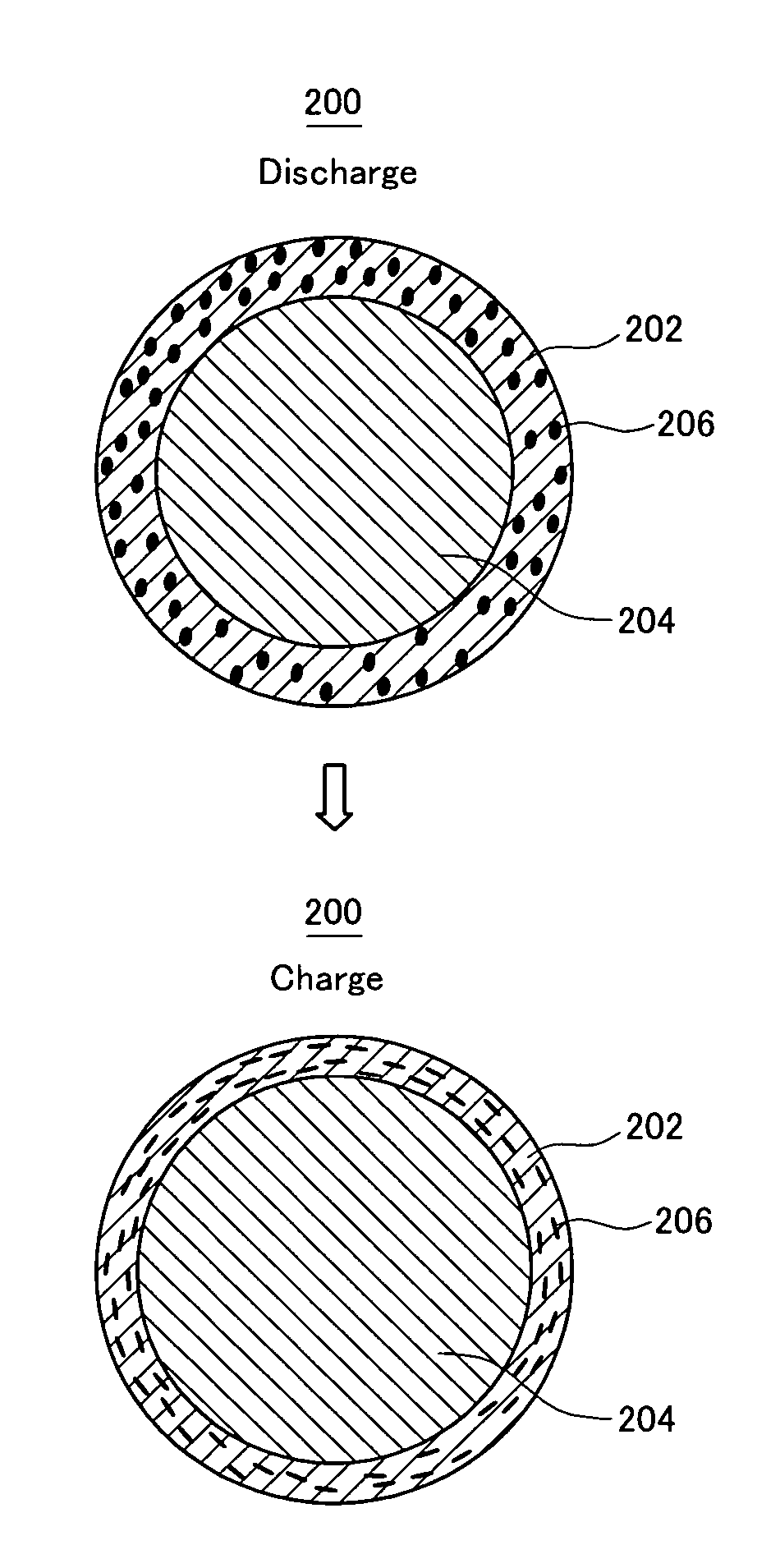Negative active material for a rechargeable lithium battery, a method of preparing the same, and a rechargeable lithium battery comprising the same
a rechargeable lithium battery and negative active material technology, which is applied in the manufacture of electrodes, cell components, electrochemical generators, etc., can solve the problems of deteriorating cycle characteristics of rechargeable lithium batteries, deteriorating cycle life of batteries, and negative active materials themselves not yet commercialized as negative active materials. , to achieve the effect of improving cycle life characteristics
- Summary
- Abstract
- Description
- Claims
- Application Information
AI Technical Summary
Benefits of technology
Problems solved by technology
Method used
Image
Examples
example 1
[0069]100 Ml of water, 500 g of zirconia balls, 20 g of crystalline carbon fiber, and 0.5 g of Orotan™ (Hanjung Chem Co.) were put in a 300 Ml plastic bottle and then ball-milled for 2 hours to prepare a mixed solution in which the carbon fiber was completely dispersed. Then, 1 g of gelatin was dissolved in 200 Ml of water. 100 g of Si powder (average particle diameter of 10 μm) was added to the mixed solution, which was then agitated and the pH controlled at 7. The above carbon fiber dispersion solution was then added, and acetic acid was used to regulate the pH to 3 to 4. The resulting solution was agitated for 10 minutes and then allowed to stand for 1 to 2 minutes. Then, Si particles coated with carbon fiber precipitated to the bottom and were recovered. The Si particles coated with carbon fiber were fired at 500° C. to remove the gelatin, thereby preparing a negative active material.
[0070]The prepared negative active material and a nickel powder were added to a binder solution ...
example 2
[0073]A half cell was fabricated as in Example 1 except that carbon black having an average particle diameter of 10 nm was used instead of the crystalline carbon fiber.
example 3
[0074]A half cell was fabricated as in Example 1 except that carbon nanotubes were used instead of the crystalline carbon fiber.
PUM
| Property | Measurement | Unit |
|---|---|---|
| particle diameter | aaaaa | aaaaa |
| particle diameter | aaaaa | aaaaa |
| particle diameter | aaaaa | aaaaa |
Abstract
Description
Claims
Application Information
 Login to View More
Login to View More - R&D
- Intellectual Property
- Life Sciences
- Materials
- Tech Scout
- Unparalleled Data Quality
- Higher Quality Content
- 60% Fewer Hallucinations
Browse by: Latest US Patents, China's latest patents, Technical Efficacy Thesaurus, Application Domain, Technology Topic, Popular Technical Reports.
© 2025 PatSnap. All rights reserved.Legal|Privacy policy|Modern Slavery Act Transparency Statement|Sitemap|About US| Contact US: help@patsnap.com



